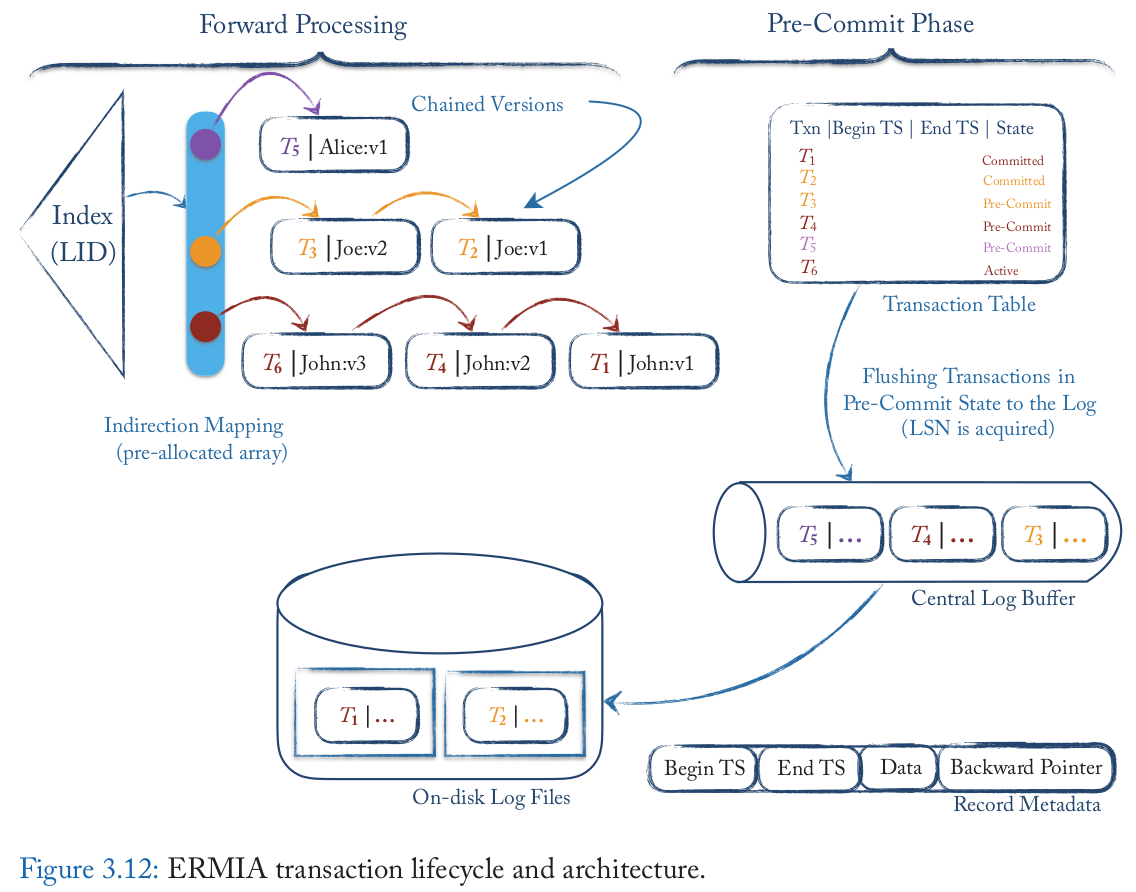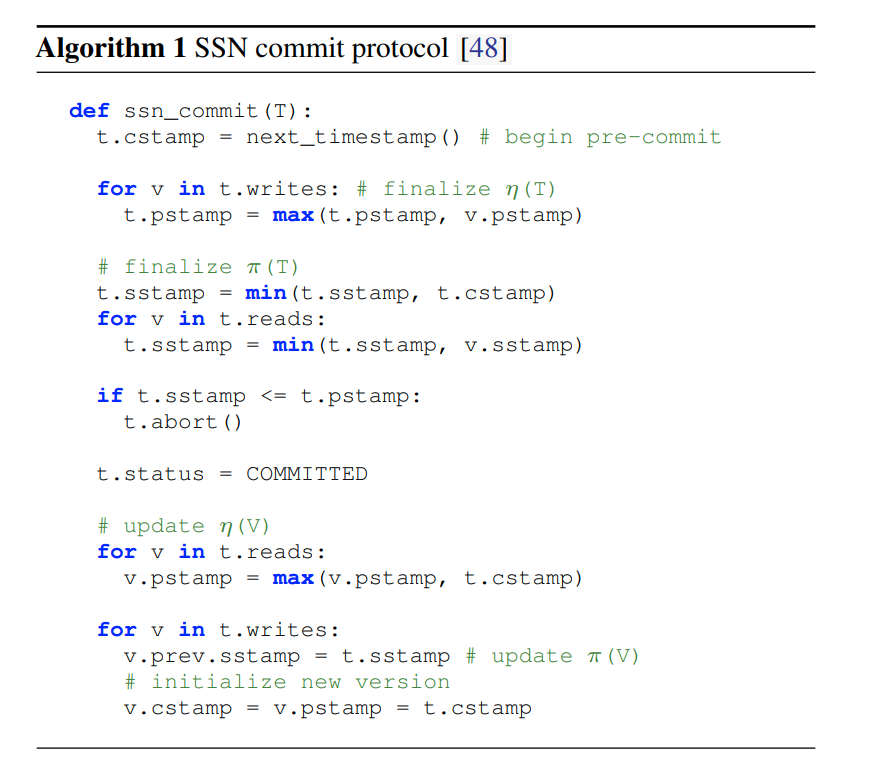ERMIA: Fast Memory-Optimized Database System for Heterogeneous Workloads
Desired properties:
* To provide robust and balanced concurrency control for the logical interactions over heterogeneous transactions.
* To address the physical interactions between threads in a scalable way and have a lightweight recovery methodology.
provide snapshot-isolation
通过SSN来保证serializability
- Highlights the mismatch between existing OCC mechanisms and heterogeneous workloads, and revisits snapshot isolation with cheap serializability guarantee as a solution
- Presents a system architecture to efficiently support CC schemes in a scalable way with latch-free indirection arrays, scalable centralized logging, and epoch-based resource managers.
- Presents a comprehensive performance evaluation that studies the impact of CC and physical layer in various workloads, from the traditional OLTP benchmarks to heterogeneous workloads.
我们主要关注的就是第二点,他的latch-free indirection arrays, scalable centralized logging和epoch-based resource managers
Design Directions
Scalable Centralized Logging
单点的logging容易成为bottle neck。
H-Store放弃使用logging,而是通过replication来避免这个问题
Silo放弃了txn的total order来避免logging bottleneck,但是缺点就是不容易实现弱隔离级别,比如SI
ERMIA选择了一个在fully coordinated logging和fully uncoordinated logging的折中点
Latch-free indirection arrays
这里的indirection是类似TupleID这样的间接层,从而避免在插入新版本的时候要更改所有对旧版本的引用
从而减少了对索引的更新。(间接的减少logging压力)
Append-only storage
因为append only storage逻辑简单,所以可以简化代码中对corner case的处理。并且简化了IO pattern
Epoch-based resource management
这个就是和MVCC配合的EBR
ERMIA


Initialization
初始化阶段先将txn加入到三个Epoch-based resource manager中。分别是Log Manager,TID Manager,以及Garbage Collector
获取log buffer,TID,以及begin ts
Forward Processing
txn通过索引访问到indirection array,然后再去遍历版本链
安装新版本的时候,将自己的TID写入到版本的begin ts field中。
读者读到了具有TID的version就会根据tid查询txn context,来判断这个版本是否可见。
日志则是会写入到private log buffer中避免冲突。
(和Hekaton没啥区别,如果是SI的话就从read view中查询状态就可以)
Pre-commit
拿到一个commit ts。然后根据CC protocol来执行验证等操作
将Log buffer放到全局的log buffer中。并将状态设置为Committed
Post-commit
遍历write set,将TID替换为Commit Ts。
最后将自己从epoch manager中拿出来。这样在并发访问的线程离开当前事务的context后,epoch manager就可以把它释放
Log Manager
txn的ts是由lsn决定的,所以其实ERMIA是把LSN的推进和ts的获取放到了一起。这样每个txn只需要修改一次lsn,就可以获得log buffer中的空间,以及commit ts
ERMIA的log将物理偏移量和LSN解偶开。将日志划分为若干个segment。感觉主要的目的是为了回收日志buffer
Epoch-based resource management
Epoch manager在切换epoch的时候,那些没有切换的线程中可能有的是没有任务的线程。所以他不会声明quiscent状态,从而阻止某个Epoch关闭。
ERMIA通过3种状态的Epoch来减少这种问题。当一个新的Epoch开始的时候,老的Epoch会被变成Closing状态。而再次出现新的Epoch的时候,Closing的Epoch才会被变成Closed的状态。这时候仍然停留的线程可能就是idle的线程。这时候就需要一些别的手段去处理他们。
SSN

pstamp就是读到的时间。对于写集中的元素,我们为了避免RW-conflict,就要保证提交时间在pstamp之后。
而sstamp应该是serial stamp的意思,代表了真正的串行顺序。即如果txn读到了某个版本,那么这个txn的ts就一定要小于这个版本的sstamp,否则就会导致读集被改变。
所以最终计算出来t.sstamp才是真正的serial stamp。然后验证他要大于pstamp,保证不会影响其他人的读。
这样的话其实CommitTs并不能保证是按照serial order来的。
(感觉和tictoc的思路很类似,只不过tictoc会移动这里的commit ts,而非去验证他在这个范围内)
文章评论